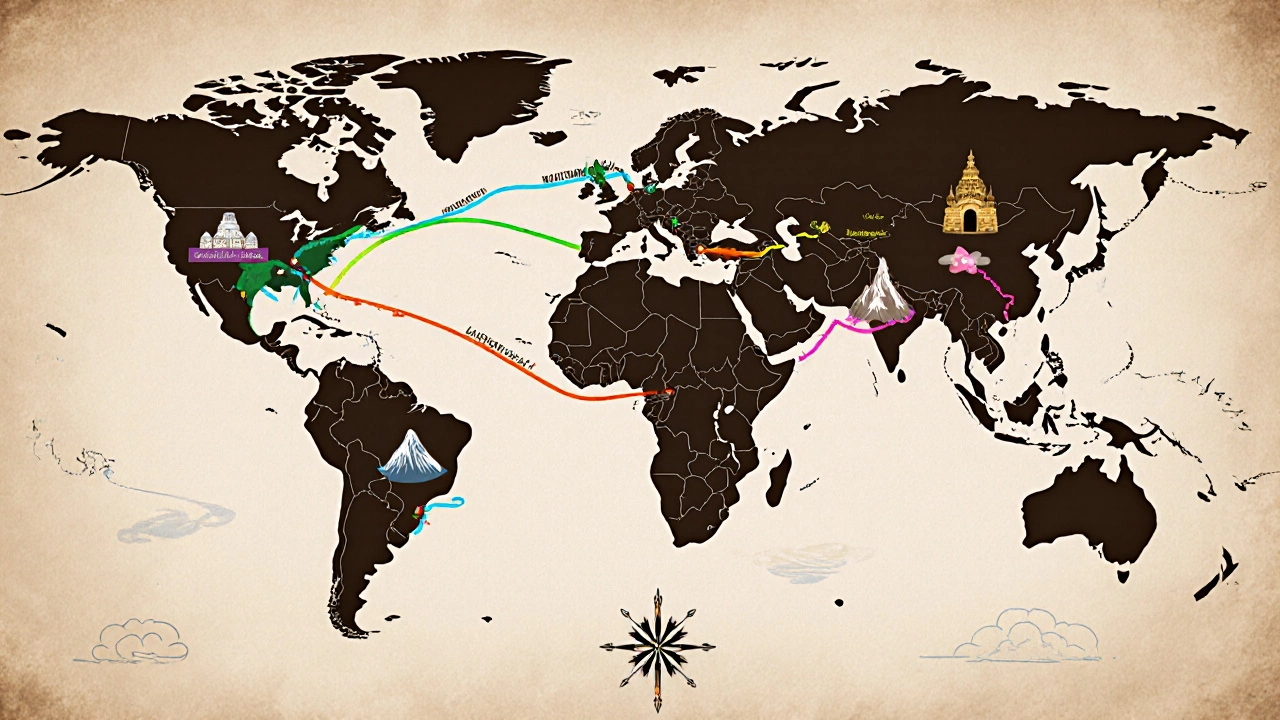Best Trek in India: Top Trails, Guides, and Safety Tips
When people talk about the best trek in India, a long-distance walking journey through rugged, scenic landscapes that test endurance and reward with raw natural beauty. Also known as high-altitude trekking, it’s not just a hike—it’s a full immersion into India’s wild heart. Whether you’re stepping onto rocky ridges above the clouds or following ancient pilgrim paths through pine forests, the Great Himalayan Trail, a 4,500-kilometer route stretching across India’s northern mountains stands as the ultimate challenge. It’s not just the longest trek in the country—it’s the one that connects you to remote villages, sacred peaks, and skies so clear you can count stars you didn’t know existed.
But the best trek in India doesn’t mean the hardest. It means the right one for you. Some travelers find their perfect match on Kedarkantha, a 4-day loop in Uttarakhand with snow-dusted meadows and panoramic views of Bandarpoonch. Others head to Roopkund, famous for its mysterious skeleton lake and high-altitude passes in the Himalayas. And then there’s Markha Valley, a multi-day trek in Ladakh that winds through Buddhist monasteries and riverbeds under towering peaks. Each trail has its own rhythm, its own risks, and its own rewards.
Here’s the truth: going solo on any of these trails is risky. That’s why hiring a local guide, a person who knows the terrain, weather patterns, and cultural protocols of the region isn’t optional—it’s essential. They know where the trail fades, when the snow will melt, and which villages will welcome you with tea and shelter. They also handle permits, which many treks require. Skip this step, and you’re gambling with your safety.
Weather, altitude, and terrain change fast in the mountains. One day you’re walking under blue skies; the next, you’re huddled in a tent as hail pounds down. That’s why preparation matters more than gear. Know your limits. Train before you go. Pack light but smart. And never ignore signs of altitude sickness—headache, nausea, dizziness—because ignoring them can turn a trip into a rescue mission.
What you’ll find below are real stories, practical tips, and hard-won advice from people who’ve walked these trails. You’ll learn why some treks are safer than others, how to pick a guide you can trust, and which routes deliver the most awe without the most risk. No fluff. No guesswork. Just what you need to plan your next adventure—whether you’re aiming for the Great Himalayan Trail or just a quiet day hike that changes how you see India.
